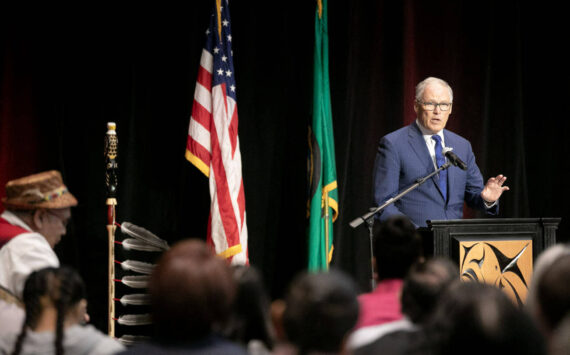By Morf Morford
Tacoma Daily Index
The term “walkability” is one of those words that makes me crazy.
Walkability is one of those trends that developers gush about in their glistening promo brochures as if they had discovered the mysterious elixir that will magically eliminate all of society’s ills, create attractive, safe and desirable neighborhoods, make us all healthier and yes, make them (and a few of us along the way) a pile of money.
In spite of the blazing headlines, somehow I think most people knew about this principle a few centuries ago.
Walkability has become perhaps the most recognizable defining feature of desirable urban design.
For some, it has possibly always been.
I know that it is difficult to believe, but cars have not always been with us.
Our beloved local car museum (https://www.americascarmuseum.org/) for example, has very few exhibits over one hundred years old.
In other words, human beings have been foot-centered for millennia and car-centered for barely over one hundred years.
In fact if you think about it, how many Americans owned cars in 1920?
It turns that it was not that many. And they weren’t city folk – city residents had trolleys, streetcars or lived in, ahem, “walkable” neighborhoods.
The automobile was most popular (at first) with farmers – three million of the nine-and-a-third million cars registered in 1921 in America were owned by farmers.
Automobile ownership in cities above 500,000 residents made up only 9% of the total, and only increased to about 11% by the end of the decade.
If you go to our local museum and check out the earliest cars on exhibit, you might be struck by how unsuitable almost all of them were for any kind of inclement weather.
In 1919, only one in ten cars sold was closed-body (and most of them were luxury cars), but by 1929 sedans made up 90% of sales.
In those early days, cars weren’t rare, but they weren’t common either – San Francisco, for example, had 461,800 vehicles registered in 1930, a rate of one per household, and as early as 1927 54% of families in cities over 100,000 had an auto.
As you might expect, cars were most popular in the cities of the midwest and California; in 1920, Des Moines, IA had the highest number of autos per capita of any city with 6.93 residents for every car. (1*)
New York City had far lower rates of auto ownership with one car registered for every 43 residents.
My point here is that most of us survived – if not prospered long – before the reign of the automobile.
There are moves against car ownership (Uber, Lyft & more) and avoidance of cars entirely, as in scooters, (or even bicycles) but the reality is that “walkability” will be with us far longer than cars or any of their substitutes.
It might be your assumption that everyone has a car. Most of us do.
In Tacoma, in 2016, we had an average of 1.7 cars for each household. That might seem like a lot, but how many people do you know with a non-operating car stashed away somewhere?
That same year, 2016, 9.3% of Tacoma households had no vehicle. (2*)
For the math challenged among us, that is almost one out of ten households with NO access to a car in our city.
Walking in those neighborhoods is not an urban luxury, it is a necessity.


Some cities in America (and most in Europe and much of Asia) are designed for life that does not depend on automobiles.
In New York City for example, over half (54.5%) of households do not own a vehicle. Even Los Angeles has about 12% of their households who do not
There’s nothing new about walkability. In fact most people raised in Europe or Asia might not even understand what it means – it is the ultimate obvious reality in many historic cities – and urban centers – and has been forever.
But many urban centers are rediscovering the appeal of walkability.
If you have been to any popular (and thriving) neighborhoods, you will notice that businesses (and communities) thrive with a maximum number of people (meaning customers) roaming, shopping, eating, attending shows, supporting museums and generally hanging out. Crime also tends to drop in busier districts.
There is a simple and obvious business principle at work here – very few of us spend money while we are in our cars. If you want your business and community to thrive financially, you need customers – not cars.
Many cities around the world are moving toward (or back to) car-less city centers: Oslo, Paris, Vienna and Dublin are only a few in Europe. (3*)
Asia offers several car free neighborhoods in cities as distinct as Hong Kong and Tokyo. (4*)
More are certainly on their way.
Maybe scooters, Uber and the rest are just transitions to – or back to – what people have always done.
So when you travel, or even wander around your own neighborhood, do the trendiest – and most historic – and sociable and most enjoyable – the most radical and most conservative – act of all – walk.
(1*) For more details on the early days of cars (before 1930) look here – http://railsandtrails.com/AutoFacts/
(2*) You can see car ownership records in American cities here – https://www.governing.com/gov-data/car-ownership-numbers-of-vehicles-by-city-map.html
(3*) A partial list can be found here – https://www.citylab.com/solutions/2015/10/6-european-cities-with-plans-to-go-car-free/411439/
(4*) A comprehensive list can be seen here – https://en.wikipedia.org/wiki/List_of_car-free_places.









